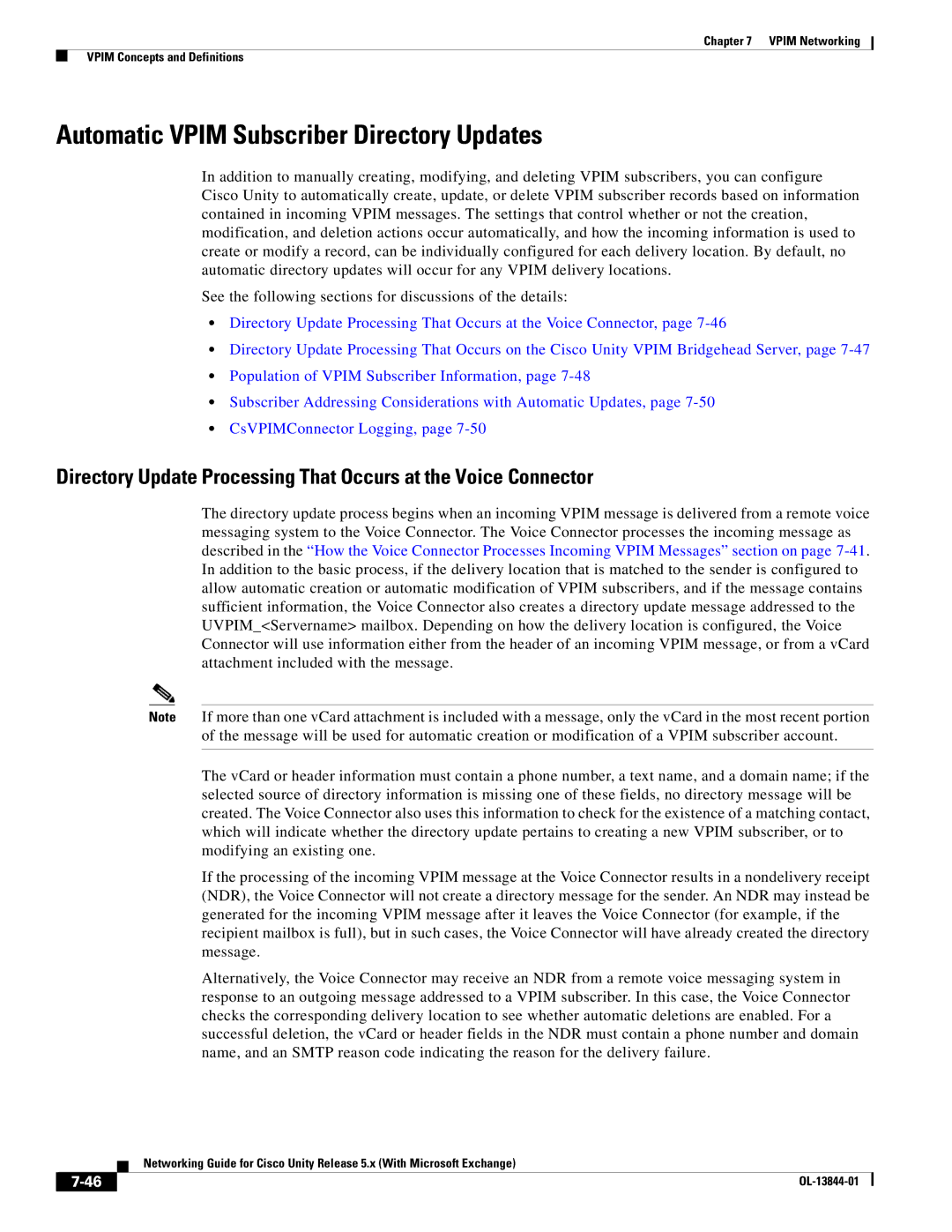
Chapter 7 VPIM Networking
VPIM Concepts and Definitions
Automatic VPIM Subscriber Directory Updates
In addition to manually creating, modifying, and deleting VPIM subscribers, you can configure Cisco Unity to automatically create, update, or delete VPIM subscriber records based on information contained in incoming VPIM messages. The settings that control whether or not the creation, modification, and deletion actions occur automatically, and how the incoming information is used to create or modify a record, can be individually configured for each delivery location. By default, no automatic directory updates will occur for any VPIM delivery locations.
See the following sections for discussions of the details:
•Directory Update Processing That Occurs at the Voice Connector, page
•Directory Update Processing That Occurs on the Cisco Unity VPIM Bridgehead Server, page
•Population of VPIM Subscriber Information, page
•Subscriber Addressing Considerations with Automatic Updates, page
•CsVPIMConnector Logging, page
Directory Update Processing That Occurs at the Voice Connector
The directory update process begins when an incoming VPIM message is delivered from a remote voice messaging system to the Voice Connector. The Voice Connector processes the incoming message as described in the “How the Voice Connector Processes Incoming VPIM Messages” section on page
Note If more than one vCard attachment is included with a message, only the vCard in the most recent portion of the message will be used for automatic creation or modification of a VPIM subscriber account.
The vCard or header information must contain a phone number, a text name, and a domain name; if the selected source of directory information is missing one of these fields, no directory message will be created. The Voice Connector also uses this information to check for the existence of a matching contact, which will indicate whether the directory update pertains to creating a new VPIM subscriber, or to modifying an existing one.
If the processing of the incoming VPIM message at the Voice Connector results in a nondelivery receipt (NDR), the Voice Connector will not create a directory message for the sender. An NDR may instead be generated for the incoming VPIM message after it leaves the Voice Connector (for example, if the recipient mailbox is full), but in such cases, the Voice Connector will have already created the directory message.
Alternatively, the Voice Connector may receive an NDR from a remote voice messaging system in response to an outgoing message addressed to a VPIM subscriber. In this case, the Voice Connector checks the corresponding delivery location to see whether automatic deletions are enabled. For a successful deletion, the vCard or header fields in the NDR must contain a phone number and domain name, and an SMTP reason code indicating the reason for the delivery failure.
| Networking Guide for Cisco Unity Release 5.x (With Microsoft Exchange) |
|
